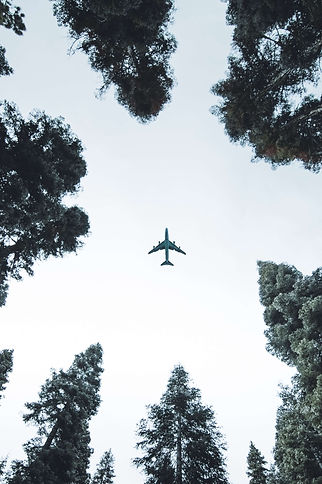


CHALLENGE KLM
RIDE THROUGH TREES
Reinforcing its commitment to sustainability in favor of a local socio-environmental project, KLM Royal Dutch Airlines launched in August the KLM Cycle for Trees Challenge.
-
THE CHALLENGE
Consisted of donating, via app, the kilometers pedaled, which were converted into trees.
For every 25 km cycled, KLM converted into 1 tree, with the goal of reaching 150,000 km cycled, to plant 6,000 trees in the Amazon region.
The goal was achieved and the planting was carried out by us at Meu Pé de Árvores in November 2022, in the Sítios Canaã and São José, both located in Rondônia and which total more than 4 hectares of area under restoration.
-
THE TREES
The planting was carried out by us at Meu Pé de Árvores in November 2022.
The aim was the recovery of degraded areas with the implementation of regenerative and self-sustaining productive systems, carried out by family farmers.
For 5 years, we will provide full support to farmers and technically monitor how the restored areas are doing.
Restoration areas
Forest restoration of an APP
ON THE CANAAN SITE
Mareilde's parents landed in Rondônia in the 1970s with only small suitcases in hand and began their family saga there. After many years of fighting "against the imposing forest", the family matriarch, seeing the damage to everyone, understood that she was not against, but in harmony with the forest and passed this vision on to her daughters, showing the potential of the oil palm trees that still lasted on the property. Her daughter Mareilde with her sisters understood her mother's message e created an association of women extractivists, who harvest buriti and babassu fruits for oil extraction for the production of artisanal cosmetics from the Amazon Bioeconomy.
With all that decades-long conflict, man versus nature, left sequels on the land as the main river of the property that is “drying up”, putting at risk both the production of cosmetics and the use of the property in general. The ills caused by degradation bring direct and indirect socio-environmental and economic damage to the local community, directly impacting more than 30 families.
Upon becoming aware of this situation, we accepted the challenge of starting Mareilde's dream, of restoring the entire river that cuts through the property. This river, which in his childhood served his family so much for water supply, as in his leisure time where he competed with his brothers to see who could swim across the river, today practically without riparian forest and silted up with just a “thickness of water”. ”. We are going to start this beautiful forest restoration project at the front of the property, planting mainly Buritis, Chestnut trees, Jequitibás, Açaí, Angico among others, as the farmer wishes, who already dreams of the future fruits she will harvest, not to mention a good bath of river.
Goal:Forest restoration of riparian forest
Area Size:3 hectares = 30,000 m²
Approximate planting:4,800 trees
Restoration gallery
 |  |  |
|---|---|---|
 |  |  |
 |  |  |
 |  |  |
 |  |  |
 |  |  |
 |  |  |
 |  |  |
 |  |  |
 |
FOREST RESTORATION OF A SPRING
ON THE SITE SÃO JOSÉ
Seu José is married to Dona Maria and the father of 4 children. He arrived in Rondônia in 1980, aged 30 and coming from the state of Mato Grosso. He says that the struggle was too great to support his whole family, he planted everything: corn, rice, beans, peanuts, bananas, cassava, potatoes, pineapples, papaya, sugarcane, coffee, rubber trees, only Brazil and teak. He also says that for more than 30 years he worked with dairy cattle and today he works with beef cattle.
The motivation to restore the property comes from a long time ago, he says he has already done two restorations, one in 2012 and one in 2014, and he was very happy with the results. For some years now the property has suffered, especially in the dry season with the lack of water and it needs to protect and reforest its springs, so that they have the volume of water as they used to be. Today José's dream is to see his spring restored and with water in abundance.
For this challenge, José accepted the partnership of Meu Pé de Árvore to help him regenerate his source. Our challenge is great, we need to plant more than 20 forest species such as: Ingá, Jatobá, Jequitibá, Mahogany, Buriti, açaí, Acacia, Angico among other trees native to the region and that perform important ecological functions.
Goal:Forest Restoration of the Riparian Forest
Approximate area: 1.1 hectares = 11,000 m²
Approximate planting:1200 trees
Restoration gallery
 |  |  |
|---|---|---|
 |  |  |
 |  |  |
 |  |  |
 |  |  |

Schedules
From Monday to Saturday
From 9am to 6pm
Payment methods
Shipping time
Certificates are sent after 12 months.
© 2024 All rights reserved to My Tree Foot Ltda CNPJ: 30.310.220/0001-82




